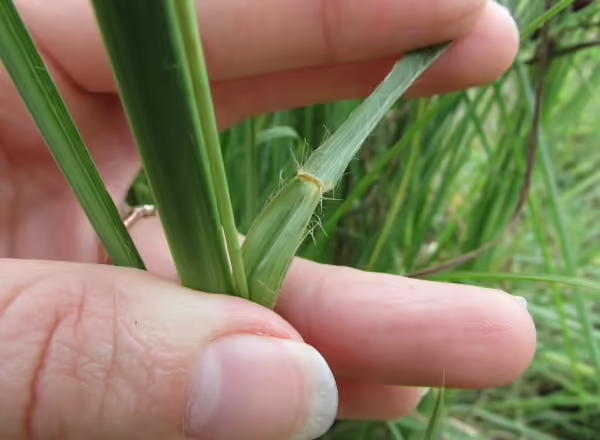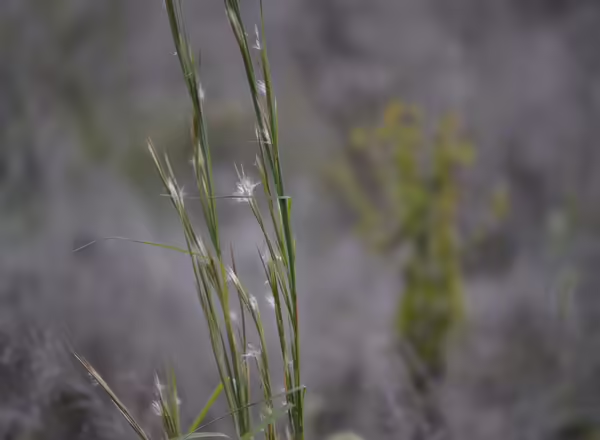
As we enter December, you’re likely not thinking about going outside to work on your grass identification skills. However, that doesn’t mean it isn’t a good time to pay attention to grasses! Certain grasses stand out during the dormant seasons of the year for one reason or another, and over the next few months we’ll take a look at some of these grasses that I find easier to identify this time of year. First up is Broomsedge, Andropogon virginicus.
BroomSEDGE?
A very common grass to see when driving in more rural areas is Broomsedge – it is often found in fields and along roadsides, in relatively disturbed areas. It is a native grass and can be found in the southern half of Illinois. Despite its name, Broomsedge is not a sedge. Sedges are another group of grass-like plants that are often confused with grasses. Many of them have triangular stems, whereas grass stems are generally round. Even though Broomsedge has the word sedge in its name, it is a grass, not a sedge.

Winter interest
Broomsedge turns a golden-orange color in the fall. Unlike many grasses that turn a drab straw-colored yellow for the entire winter, Broomsedge keeps its orange color. That combined with its growth habit, which is a tight bunch, make this grass very distinctive and easy to pick out. Broomsedge often has lots of leaves, giving it a bush-like appearance. Just the other day I saw some patches of it along the roadside, followed by entire fields covered in this grass.
How to identify in the summer
If you are trying to identify this grass during the growing season, look for a dense bunchgrass with lots of leaves along its flattened stems. You can often find hairs along the leaves, especially near their bases, as well as a membranous ligule.
Since this is a warm-season grass, in late summer and early fall it will produce a raceme inflorescence with small collections of spikelets covered in white fluffy hairs. These collections of spikelets often resemble eyelashes.
Telling it apart from other grasses
While there are a few other species of Broomsedge grasses in Illinois, this one is by far the most common. The grass that I find myself confusing most often with Broomsedge is Little Bluestem. In general, Little Blue will be less bushy and leafy, with more delicate stems and smaller collections of fluffy spikelets. It is often found in more high-quality habitats than Broomsedge.



Have you seen Broomsedge before? Can you pick it out from other grasses in the dormant season? Check out this video below to get some helpful identification hints.
Broomsedge, Andropogon virginicus, is a native, warm season grass. This bunchgrass typically grows two to three feet tall. Broomsedge has flattened rather than round stems, and it has many leaves, resulting in a bushy appearance. This grass often, but not always, has hairy leaf blades...
Never miss a new post! Sign up for our email list.
ABOUT THE AUTHOR: Erin Garrett is a Natural Resources, Environment, and Energy Educator for University of Illinois Extension serving Alexander, Johnson, Massac, Pulaski, and Union counties. Erin develops and delivers high impact programming to adults and youth to help them develop an appreciation for natural resources and to empower them to make small changes to positively impact the environment. Erin’s programming focuses on why homeowners should consider choosing native plants, how to support native pollinators, how to identify grasses, how to identify and manage invasive species, and developing an appreciation for prairie ecosystems.
ABOUT THE BLOG: Grasses at a Glance dives into grass identification, focusing on tips and tricks that make grass identification possible. Get information about native and non-native species, how to tell look-alikes apart, and which grasses you can find in Illinois.